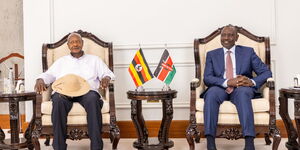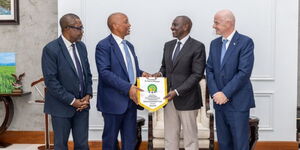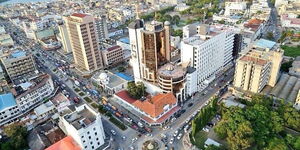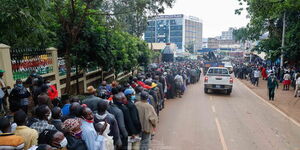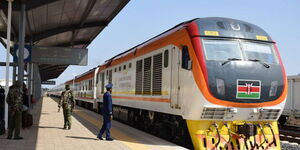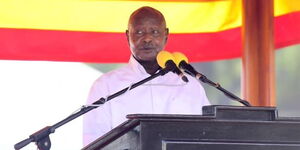For the third week running, Kenyans have been treated to a spectacle of long queues at petrol stations following the shortage of fossil fuels in the country.
Most of the petrol stations in the country have run out of fuel, with the few that have the commodity experiencing never seen before commotions as motorists go to the lengths of physically scrambling for fuel.
The shortage has persisted despite President Uhuru Kenyatta signing the Supplementary Budget that allocated Ksh34.4 billion to the oil marketers in the government subsidy programme.
At the same time, the country received an additional 100 million litres of super petrol last week, with the government assuring Kenyans that it had enough supply to last over a month. If this is the case, then it begs the question: Where is the fuel?
There have been a couple of explanations as to the cause of this crisis, with various stakeholders offering divergent views.
The Energy and Petroleum Regulatory Authority (EPRA) indicated that the fuel shortage was attributed to Oil Marketing Companies (OMCs) prioritising fuel to foreign markets at the expense of the local supply.
Delayed Subsidy Payments
This in turn led to the authority cracking the whip on the said OMCs by slashing their storage capacity over the next three-month period.
"EPRA has analyzed the daily petroleum loadings over the past four weeks and noted that a number of OMCs have in the period under review given priority to export loadings while the local market was left to suffer intermittent supply," EPRA stated.
However, an insider in the oil industry - who spoke to Kenyans.co.ke - has disputed the EPRA theory.
The insider, who sought anonymity, agreed with the government on the availability of fuel in the country but pointed out that most dealers were not willing to release their current stock until the government releases the remaining fuel subsidy funds.
He went ahead to mention that the government was in arrears running to months and that the recently released Ksh34.4 billion was yet to reach the oil marketers.
"For a fact, we have more than enough fuel in the country and in our respective depots. However, we cannot continue selling fuel at a loss when the government has not paid us our subsidy funds for months now," he stated.
High Landing Cost
The source went on to reveal that the biggest chunk of the fuel in their depots was set for sale from the 15th of April after EPRA releases new prices, which he opined are set to go up. He noted that oil marketers were unwilling to make any losses.
"There is no fuel marketer who want to touch next month's stock. Who would do that when the prices are set to go up?" he wondered.
The insider went on to detail that the current stock retailing at Ksh134.7 per litre of super petrol had a landing cost of about Ksh150 per litre and the government subsidized Ksh14.3 per litre. For the new stock for the coming month, he noted that the landing cost was as high as Ksh160 per litre, meaning that the price will depend on the subsidy the government will offer per litre.
"The subsidy programme is good for the end consumer, me included. However, if the government does not meet its end of the bargain, then we have nothing else to do but to keep our stock," he stated.
"If the government does not release this money, we will use the total landed cost as our pricing base come the 14th of this month. If it is Ksh160 per litre, we will sell at that price too."
The insider detailed that fuel prices are always agreed upon by the stakeholders and determined by the prevailing market forces.
He also rubbished claims by EPRA that oil marketers were diverting fuel meant for local market and selling it across the borders.
"This is a baseless argument. Every oil seller has set volumes for each of their territories. If the fuel imported is meant to be sold in Kenya, I cannot take it to Uganda since I also have an import for that country," he stated.
Failed Price Controls
To understand the gravity of the crisis, renowned economist, David Ndii, opined that the shortage is caused by the failure of price controls and government creditworthiness.
"First, it is a failure of price controls. In short, when circumstances change, prices adjust accordingly enabling businesses to operate profitably.
"If prices are fixed and cannot adjust, then it is quantities (supply) that adjust. That is why price controls and shortages go hand in hand. Once upon a time, this was the norm in Kenya, especially before the budget when products were hoarded in anticipation of price hikes," stated Ndii.
"Shortages are limited to products and services whose prices are regulated - electricity, water, fuel. The price mechanism is the crux of why a decentralized market system beats centralized command and control economy," he added.
Pollmans Tours and Safaris Ltd Director of Operations and renowned hotelier, Mohamed Hersi, took to his social media to weigh in on the matter, opining that it is better for motorists to pay for the fuel without the subsidy than to run on empty.
"We rather pay the market price of Ksh167 for a liter and get fuel without queuing and wasting a lot of man-hours. First things first, please announce new rates without subsidy then rest will follow. It is hard to remain an optimist when blame game happens on a crucial matter like this," stated Hersi.
The crisis has seen the rise in commodity prices with shortages hitting most parts of the country.


